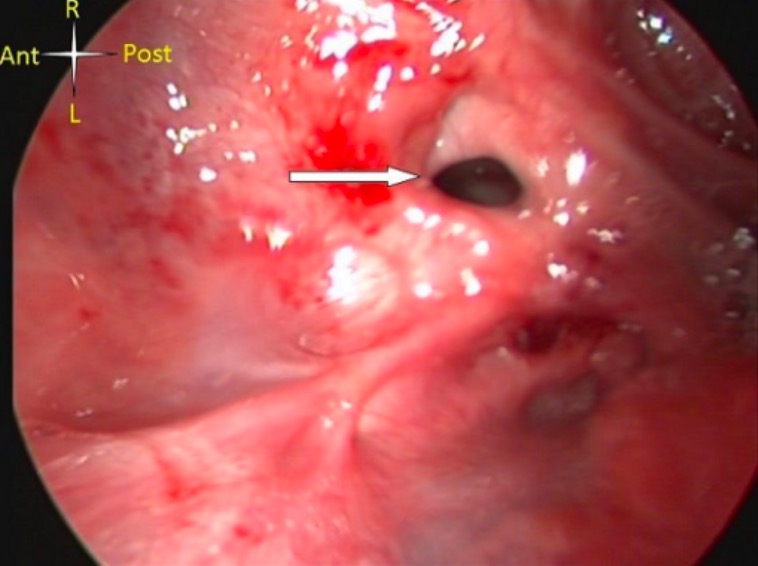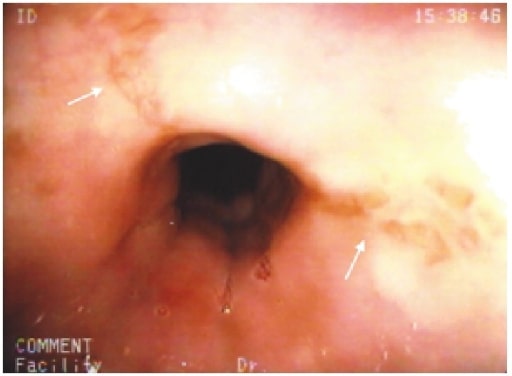Playlist
Show Playlist
Hide Playlist
Caustic Ingestion
-
Slides GD Esophagus.pdf
-
Download Lecture Overview
00:01 Caustic Ingestion. If a patient has been taking chemicals; consumption of it, such as drain cleaners. 00:10 Why? You might have to ask the patient. 00:12 But injury by alkali, more so than acids. 00:15 Alkali is much more dangerous in terms of the way that the chemical then affects the esophagus. 00:22 You’re going to cause full thickness burn, liquefactive necrosis, with the caustic ingestion of alkaline agent. 00:30 Do not induce vomiting by… after lye ingestion. 00:33 The vomiting actually worsens the burn. 00:35 That is a huge management point there. 00:38 Once again, do not induce vomiting after lye ingestion. 00:42 It just makes matters worse, because now the patient is literally exogenously introducing damage internally to the esophagus. You can expect there to be strictures taking place. Stricture formation is common, may be prevented by getting in there with endoscopy and then dilating your esophagus maybe perhaps by placing a stent. 3 to 4 weeks after ingestion. 01:11 You’ll want to wait a little bit because the patient is going to be in quite a bit of pain. 01:16 Caustic ingestion; alkaline agents. 01:20 Complications: with the full thickness being involved here, and with the liquefactive, you’re worried about perforation. 01:56 It becomes very, very crucial for you to closely examine a patient after you know there’s a history of caustic ingestion, because if that esophagus ruptures, your patient’s dead! So that is a big deal here with perforation. 02:14 Risk factor here, remember now, with caustic ingestion, and you’re thinking more along the lines of alkaline, much more so than acid. 02:24 And with the stricture formation, and with persistent irritation, dysplasia and the type of cancer that the patient would most likely develop would be squamous cell cancer of the esophagus. 02:41 Versus reflux which would then first undergo metaplasia, then may then develop dysplasia and adenocarcinoma.
About the Lecture
The lecture Caustic Ingestion by Carlo Raj, MD is from the course Esophageal Disease: Basic Principles with Carlo Raj.
Included Quiz Questions
What is the MOST common malignancy associated with injury to the esophagus by an alkaline agent?
- Squamous cell carcinoma
- Adenocarcinoma
- Sarcoma
- Lymphoma
- Small cell cancer
A 40-year-old patient comes to your office with discomfort in his throat. Barium esophagography reveals strictures in his esophagus. Upon further questioning, he says that he had ingested some kind of cleaning liquid years ago. What would have prevented this complication in this patient?
- Endoscopic dilatation or stenting soon after the poisoning
- Chest X-ray
- Inducing vomiting
- Charcoal ingestion
- CT scan of the chest
Which pathologic feature is seen in the esophagus after poisoning by an alkaline substance?
- Liquefactive necrosis
- Coagulative necrosis
- Fat necrosis
- Fibroid necrosis
- Gangrenous necrosis
Customer reviews
5,0 of 5 stars
| 5 Stars |
|
5 |
| 4 Stars |
|
0 |
| 3 Stars |
|
0 |
| 2 Stars |
|
0 |
| 1 Star |
|
0 |





